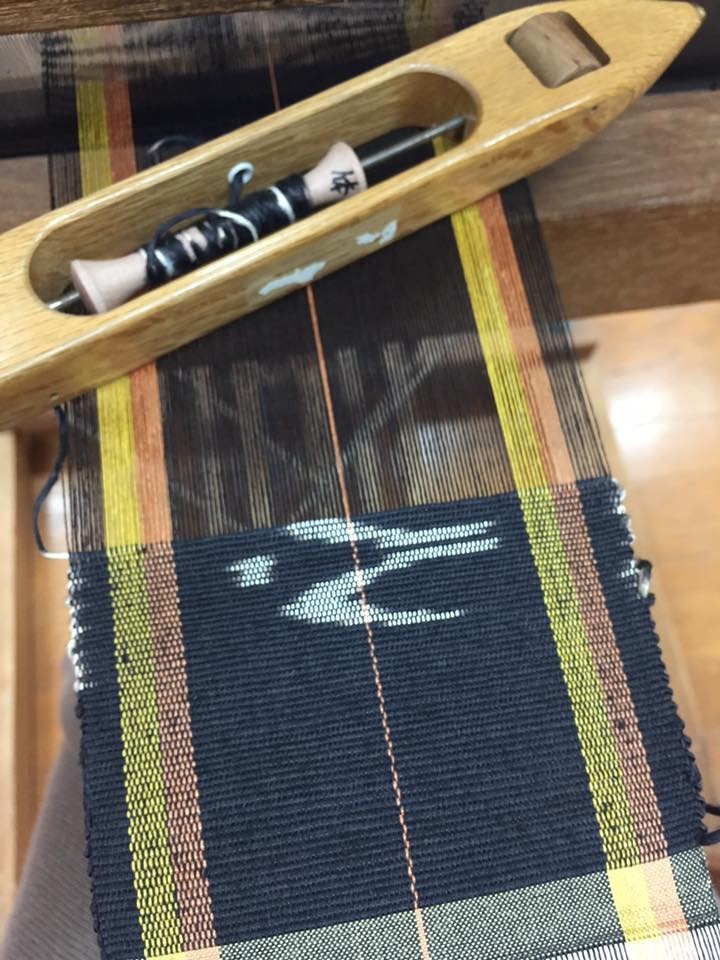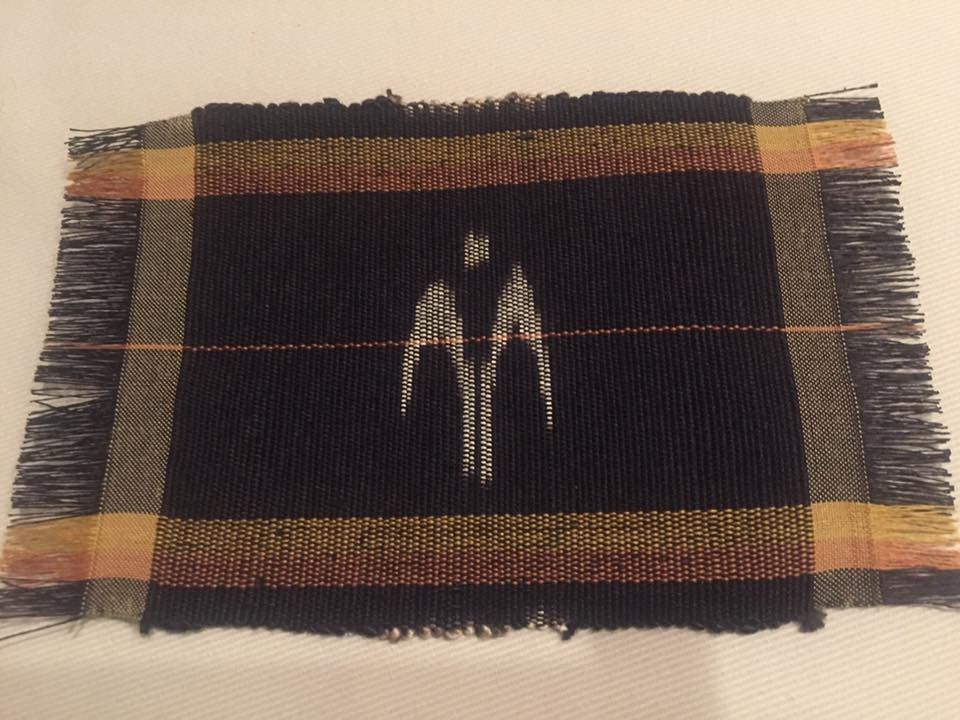Vol.15 Kumejima tsumugi, Okinawa | 沖縄, 久米島紬~織編
伝統工芸が数多く残る沖縄。久米島紬の特徴は、島の草木や泥で染められた素朴な風合いと、ひとりの織り手が全ての作業をおこなう工程だ。蚕を育て、糸を紡ぎ、久米島の草木を採って染料を作り、図案を書き、絣の縛りをして、糸を染め、そして織っていく。気の遠くなる作業をひとりでおこなう。
Okinawa has many traditional crafts. Kumejima tsumugi is characterized by its simple texture dyed with island plants and mud, and by the process in which a single weaver does all the work. He raises silkworms, spins threads, gathers plants and trees from Kume Island to make dyes, draws designs, binds the kasuri, dyes the threads, and weaves the cloth.
The mind-boggling process is carried out by a single person.
染めの次はコースターの織物体験。まずは織りたい文様を選ぶ。私は小鳥(トリグゥー)にした。Next to dyeing, we will experience weaving coasters. First, you choose the pattern you want to weave. I chose a small bird (trigu).

縦糸はすでに織り機にセットしてあるので、横糸を折る作業を教わる。
パタン、トントン、パタン、トントン。
The warp threads are already set on the loom, so we are taught to fold the weft threads.Pat, ton, pat, ton, pat, ton.

糸を右から左へ通して、パタン(足を組み替えて糸の上下を変える)トントン(通した糸を押し込む作業)を繰り返しおこなう。
トリグゥーの模様が入るところで、専用の糸に変える。この糸は鳥の絵柄が白く出てくるように、糸を染める段階で絵柄の部分を白く抜いてある。何センチ幅のどの位置に模様がくるか、図面を作り、白く抜けるように糸を縛る。
一本一本、絵柄がキレイに出るように織っていく。ちょっとずれちゃったかな、となったら戻りながらパタン、トントン、と。
素朴な風合いのコースターができました〜^ ^
Thread the yarn from right to left, and repeat the patting (changing the thread up and down by rearranging the legs) and thumping (pushing the thread through).
At the point where the pattern of “trigoo" appears, the yarn is changed to a special yarn. This yarn is dyed white so that the bird design will appear in white. A drawing is made to determine the position of the pattern in the width of a few centimeters, and the thread is tied so that the white is removed.
Weaving one by one, the pattern comes out beautifully. If the pattern is a little off, the weaver returns to the drawing and weaves again with a clap, thump, and thump.
A coaster with a rustic texture was created.

Kumejima tsumugi silk
KOGEI JAPAN
https://kogeijapan.com/locale/en_US/kumejimatsumugi/



